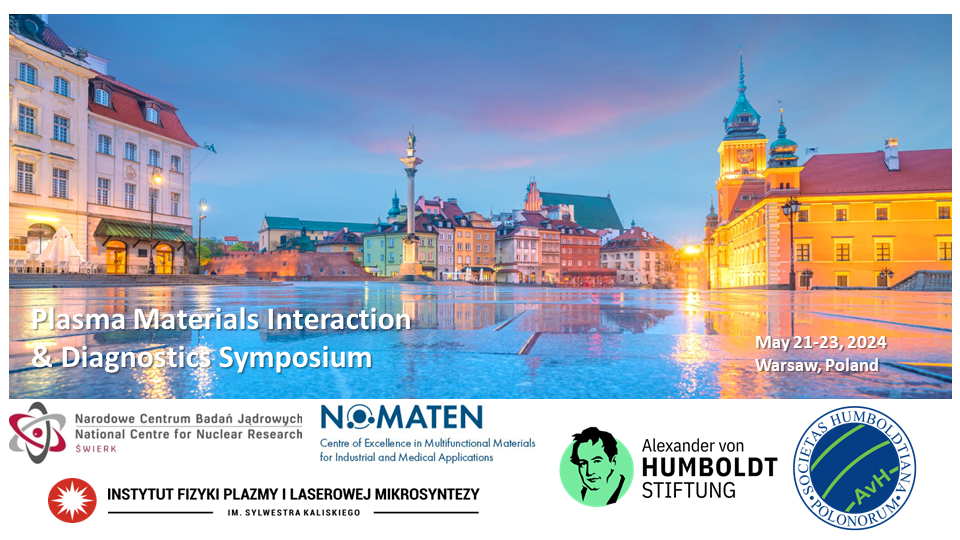Speaker
Description
The experimental fusion reactor ITER will be heated by injection of a fast neutral beam generated by acceleration and neutralization of negative ions. The negative ion source used for this purpose (SPIDER), constructed at the Consorzium RFX (Italy) consists of 8 driver volumes where radio-frequency (RF) power is inductively coupled to the plasma electrons and an expansion chamber containing a magnetic filter (MF). The physical and numerical principles of a comprehensive fluid model of this source is presented. The model gives a self-consistent two-dimensional description of the source, including the neutral gas flow, plasma chemistry, RF coupling in the source driver and plasma transport through the magnetic filter. The different particle species (electrons, the three types of the positive ions: H+, H2+,H3+, negative ions H- and the neutral species: hydrogen atoms H and molecules H2) are described by separate continuity equations and the electron temperature is governed by the electron energy balance equation. The particle fluxes are found from momentum equations neglecting the inertia terms (drift-diffusion approximation). The model accounts for the losses of particles and electron energy in the third dimension. The electrostatic coupling between electrons and ions is described by the Poisson equation.
The inductive coupling between radio frequency (RF) waves and the plasma, which is decisive in determining the characteristics of the plasma conditions at the beginning of the expansion region forms an essential ingredient of the model. The details of the RF model and the necessary code developments to simulate the currents in the source induced by the radio-frequency (RF) currents flowing in the feeding coils are outlined. In our approach, the RF electrical field is split in a plasma part plus another one in vacuum, E = Ep + EV, which simplifies the boundary conditions for Ep while EV is obtained from a theoretical formulation for the field generated by a current loop, which results in a fast and flexible numerical algorithm providing converged solution for the RF field after a few iterations, even for the cases with high conductivity of the plasma.
The coupled system of model equations is solved numerically, by a FORTRAN code FSFS2D (Fluid Solver For SPIDER in 2D), taking into account both the time evolution and two spatial dimensions. The method is based on finite volume approximation and 9-point discretization on a non-uniform, staggered mesh is used to account for anisotropy due to magnetic field. Semi implicit numerical solver allows for large time steps (> 1000 x explicit time step) producing steady-state solution in a reasonable time (few hours for 100x100 mesh).
An important element in the development of the numerical framework is the validation of the code results against the experimental data. For that aim a series of numerical simulations have been performed to reproduce some of the experimental results from the SPIDER experimental campaigns. The existing data base of Langmuir probe measurements at different positions in the SPIDER device provides a complete set of profiles of plasma parameters along one spatial direction (axial profiles) as well as parametric scans at fixed probe positions.
Critical assessment of the validation results and outline of the necessary code/model enhancements required to improve the predictive capability of the FSFS2D code is discussed.

